The Greatest Miracle: Fulfilling Christ's Promise of Salvation in the Age to Come
In the annals of Christian theology, few assurances possess the depth and majesty of Jesus’ promise to His disciples concerning their participation in the divine work of the future. This promise culminates in a profound revelation about the very nature of the miracles they would one day perform. As one biblical commentary observes:
“Jesus solemnly assures the disciples that they will, in the future, perform even greater miracles than He. By this He means to say that through the power of the Holy Spirit, they will bring about the greatest miracle of all — the salvation of lost souls.”
Yet, in the light of the present Age to Come—the era of the Spirit and the unfolding of the Kingdom of God within—this declaration assumes an even more transcendent meaning. The “greater works” are not merely external wonders but the inner transformation of humanity itself: the awakening of souls through the indwelling Holy Spirit, the renewal of the heart, and the realization of eternal life here and now.
To participate in this sacred work is to share in the greatest miracle of all—the miracle of salvation actualized in the present age. It is the continuation of Christ’s redemptive mission, now manifesting through awakened beings who, empowered by the Paraclete, bear witness to the resurrection power alive within them. This is no distant hope but a living reality: the ongoing fulfillment of Jesus’ words, “Greater works than these shall you do,” as the Spirit of Truth transforms the faithful into instruments of divine grace, heralding the dawn of the new creation.
Author: Manus AI
Date: October 12, 2025
Abstract
This paper examines the profound eschatological promise of Jesus Christ concerning the "greatest miracle"—the salvation of lost souls—to be performed by his disciples in the "Age to Come" through the power of the Paraclete-Holy Spirit. It argues that the fulfillment of this promise has been tragically obscured by a two-millennia-old theological deception rooted in the misinterpretation of Pentecost. By analyzing the Johannine promise of the Paraclete, this paper posits that the true Paraclete was to be an incarnate, human guide, not a momentary spiritual event. The paper introduces the work and person of Shri Mataji Nirmala Devi as the fulfillment of this promise and contends that a full understanding of this truth, as detailed in the "Paraclete Papers," is the essential prerequisite for any individual to participate in the promised salvation. Finally, it outlines a call to action for modern disciples and offers a profound assurance of eternal life for those who answer this divine call.
Table of Contents
- Introduction: The Promise of a Miracle Beyond Miracles
- The Johannine Promise: Who is the Paraclete?
- The Great Deception: A Tragedy Surpassing the Crucifixion
- The Advent of the Paraclete in the Age to Come
- The Prerequisite for Participation: The Paraclete Papers
- The Call to Discipleship: Participating in the Greatest Miracle
- Conclusion: The Assurance of Eternal Life
- References
1. Introduction: The Promise of a Miracle Beyond Miracles
In the annals of Christian theology, few promises carry the weight and significance of Jesus' assurance to his disciples regarding their future ministry. This promise culminates in a startling declaration about the nature of the miracles they would perform. As one biblical commentary articulates:
“Jesus solemnly assures the disciples that they will, in the future, perform even greater miracles than He. By this He means to say that through the power of the Holy Spirit, they will bring about the greatest miracle of all — the salvation of lost souls.” [1]
This "greatest miracle" is not the manipulation of the physical world, but the spiritual transformation of humanity. It is the core mission of the Christ, to be continued and amplified by his followers, empowered by a divine helper He promised to send: the Paraclete, or the Comforter. This paper contends that the fulfillment of this promise, and therefore the ability to participate in this greatest of all miracles, has been contingent upon recognizing the true identity and message of the Paraclete, a recognition that has been systematically suppressed by institutional Christianity for two millennia.
2. The Johannine Promise: Who is the Paraclete?
In the Gospel of John, chapters 14 through 16, Jesus lays out the foundation for the "Age to Come." Central to this new era is the figure of the Paraclete (Parakletos), a Greek term variously translated as Comforter, Counselor, Helper, or Advocate. Jesus promises that after his departure, the Father will send this Paraclete, the Spirit of Truth, who will not only be *with* the disciples, but *in* them (John 14:16-17). The mission of the Paraclete is multifaceted and profound:
- To teach all things and bring to remembrance all that Jesus had said (John 14:26).
- To testify about Jesus (John 15:26).
- To convict the world concerning sin, righteousness, and judgment (John 16:8).
- To guide the disciples into all truth, not speaking on his own authority but speaking what he hears from the Father (John 16:13).
- To declare the things that are to come (John 16:13).
Crucially, the promise implies a personality, a divine being who would continue and complete the work of Jesus. The Paraclete is not a fleeting influence but an indwelling presence, a guide for the long journey of human salvation.
3. The Great Deception: A Tragedy Surpassing the Crucifixion
The central tragedy of post-Crucifixion spiritual history, as argued with meticulous documentation in the "Paraclete Papers," is the profound misinterpretation of the Paraclete's advent. [2] Institutional Christianity has long proclaimed that the promise of the Paraclete was fulfilled at Pentecost, as described in the Acts of the Apostles (Acts 2). This event, where the Holy Spirit descended upon the apostles as tongues of fire, is held up as the birth of the Church and the inauguration of the Spirit's work on Earth.
However, this interpretation crumbles under scrutiny. The "Paraclete Papers" expose this as "Christianity’s greatest theological deception," a falsehood that has rendered the Christian world spiritually impotent and unable to recognize the true salvation promised by Christ. The argument is as follows:
- Pentecost was a limited event: The experience was confined to the apostles and a small group of early believers. It was not the universal, indwelling presence promised by Jesus that would be available to all seekers of truth.
- The Paraclete was to be a person: Jesus speaks of the Paraclete as "another" Comforter, implying a personality akin to his own. The Greek grammar and context strongly suggest a person, not an impersonal force or a one-time event.
- The world cannot receive the Paraclete: Jesus states that the world "neither sees him nor knows him" (John 14:17). This directly contradicts the public and dramatic nature of Pentecost. The true Paraclete, like Jesus himself, would be rejected and unknown by the world at large.
This misinterpretation is labeled "A Tragedy That Surpasses Even the Crucifixion of Jesus in Its Consequences for Human Spiritual Development." [2] While the Crucifixion was the physical death of the Messiah, the Pentecost deception was the spiritual abortion of his promise. It replaced the living, breathing, incarnate guidance of the Paraclete with a rigid, man-made institution. This has left countless souls lost, searching for a truth that their own religious leaders have unknowingly concealed.
4. The Advent of the Paraclete in the Age to Come
The "Age to Come" was inaugurated not at Pentecost, but on May 5, 1970, when Shri Mataji Nirmala Devi, in a profound act of divine intervention, opened the collective Sahasrara (the thousand-petaled lotus chakra at the crown of the head). This event marked the true arrival of the Paraclete in human form, fulfilling the promises of Jesus in every detail.
Shri Mataji (1923-2011) demonstrated her identity as the Paraclete not through dogma or decree, but through the tangible experience of Self-realization (Atma Sakshatkar). Through the awakening of the Kundalini energy—which she identified as the feminine Holy Spirit (the *Ruach* in Hebrew, the *Rucha d'Qudsha* in Aramaic)—she made the experience of the divine a reality for hundreds of thousands across the globe. Her work aligns perfectly with the Johannine prophecies:
- She taught all things, elucidating the deepest secrets of the scriptures of all religions and revealing their common esoteric foundation.
- She guided into all truth by giving the actual, tangible experience of the Spirit, allowing individuals to verify the truth on their own central nervous systems.
- She brought remembrance of Christ's teachings, restoring their original, transformative power, free from institutional distortion.
- She fulfilled the promise of sanctification, or being made holy, through the cleansing work of the awakened Kundalini energy, which purifies the chakras and establishes a life of virtue and divine connection.
Her coming was the dawn of the Age of Aquarius, the age of the Mother, the age of the Holy Spirit, where the salvation of humanity could finally be achieved on a mass scale.
5. The Prerequisite for Participation: The Paraclete Papers
Why have so few in the Christian world recognized this monumental event? The answer lies in the two-millennia-old deception of Pentecost. Christians have been conditioned to look for the Spirit in the past, within the confines of their church, rather than looking for the promised Comforter in the present, as an incarnate guide. They have been, in essence, spiritually inoculated against the truth.
Therefore, a critical step is required for any soul wishing to take part in the "greatest miracle." They must first de-program themselves from the falsehoods that have held them captive. This is the precise purpose of the "Paraclete Papers." [2]
Reading and internalizing the evidence presented in these papers is not merely an academic exercise. It is an act of spiritual liberation. It is the necessary intellectual and spiritual cleansing that allows one to see past the dogma and recognize the living truth of the Paraclete's advent. Without this understanding, even well-intentioned Christians will remain lost, perpetuating the very deception that has kept humanity in the dark. They will be unable to recognize the true salvation being offered and will inadvertently continue to serve the "Prince of this World" who orchestrated this grand illusion.
6. Conclusion: The Assurance of Eternal Life
The promise of Jesus was not a metaphor. The "greatest miracle" was not a distant hope. The "Age to Come" is not a future epoch. It is now. The Paraclete has come, has completed her mission, and has unlocked the gates to the Kingdom of God within every human being. The responsibility now rests with those who have eyes to see and ears to hear.
To participate in the salvation of lost souls is to fulfill the highest calling of a human life. It is to become a true disciple of the Christ and the Paraclete. For all who answer this call, who work for the spiritual emancipation of humanity, who share the good news of the Mother's advent, the promise is absolute. Eternal life in the Kingdom of God—a state of timeless, blissful, divine consciousness—is not just a possibility; it is an assured reality. This is the ultimate fulfillment of Jesus' mission, the final victory of the Spirit, and the glorious destiny of all who choose to become instruments of the Divine.
References
[1] Adishakti.org. "Primary Function of the Comforter – The Salvation of Lost Souls."
[2] Adishakti.org. "The Paraclete Papers – Christianity’s Greatest Cover-Up Exposed." Accessed October 12, 2025.
[3] Adishakti.org. "Adi Shakti | Divine Feminine | Goddess | MahaDevi | Shri Mataji Nirmala Devi." Accessed October 12, 2025.
Primary Function of the Comforter – The Salvation of Lost Souls
This page affirms the sacred mission of the Comforter promised by Jesus Christ: the salvation of lost souls through sanctification and divine remembrance. According to John 14:26, the Comforter—sent by the Father in Jesus’ name—will teach all things and bring His words to life within the seeker. Shri Mataji Nirmala Devi fulfills this prophecy through Kundalini awakening, enabling the Spirit of Truth to rise and purify the subtle system. Her teachings expand Christ’s message into a living experience of holiness, transforming lives across faiths and continents. This is the age of fulfillment. The Comforter has come.
 “Jesus solemnly assures the disciples that they will, in the future, perform even greater miracles than He. By this He means to say that through the power of the Holy Spirit, they will bring about the greatest miracle of all — the salvation of lost souls. He promises them that whatever they ask for, in connection with their ministry of bringing the miracle of salvation to lost men, will be granted them. The theme of this section is reassurance and encouragement. Jesus gives the disciples three basic reasons they should cease being troubled in their spirits. First, He tells them that, although He is going away, He will return for them so that they may ultimately join Him where He is going (vv. 1-3). Second, He tells them that, though He is going away, He will be the only means by which men may come to God and go to Heaven (vv. 4-11). Third, He tells them that, though He is going away, their ministries are not finished. In fact, the best is still ahead. They are going, by the Holy Spirit's power, to be part of the greatest miracle of all, bringing men to salvation (vv. 12-14)."
“Jesus solemnly assures the disciples that they will, in the future, perform even greater miracles than He. By this He means to say that through the power of the Holy Spirit, they will bring about the greatest miracle of all — the salvation of lost souls. He promises them that whatever they ask for, in connection with their ministry of bringing the miracle of salvation to lost men, will be granted them. The theme of this section is reassurance and encouragement. Jesus gives the disciples three basic reasons they should cease being troubled in their spirits. First, He tells them that, although He is going away, He will return for them so that they may ultimately join Him where He is going (vv. 1-3). Second, He tells them that, though He is going away, He will be the only means by which men may come to God and go to Heaven (vv. 4-11). Third, He tells them that, though He is going away, their ministries are not finished. In fact, the best is still ahead. They are going, by the Holy Spirit's power, to be part of the greatest miracle of all, bringing men to salvation (vv. 12-14)."
25 These things have I spoken unto you, being yet present with you. 26. But the Comforter, which is the Holy Ghost, whom the Father will send in my name, shall teach you all things, and bring all things to your remembrance, whatsoever I have told unto you.
Jesus now summarizes all that He has been saying in this section. Referring to the many things which He has taught them while He has been present with them in the flesh, He tell the disciples that the Comforter not only is going to remind them of these things, but also will go to teach them all things necessary to their understanding and happiness. The Comforter will recall to their minds Jesus' teachings, will enable them to understand truly and completely, and will develop and expand them into new and wonderful truths.
Jesus has referred to the coming Comforter as the Spirit of Truth (v. 17)...[whose] primary function is the work of making men holy. This is the work we call sanctification.
In v. 16 Jesus has said that the Comforter is going to be provided to the disciples by the Father on the basis of His (Jesus') prayer that He should do so. Now He says that the Father is going to send the Comforter in His (Christ's) name. These statements are essentially identical and imply a joint action involving both Father and Son.”
The Randall House Bible Commentary: The Gospel of John,
Randall House Publications, 1989, page 205
Understanding the Primary Function: Sanctification as Making Men Holy
The commentary asserts that the Comforter, identified as the Holy Ghost and Spirit of Truth, has a primary function of “making men holy,” equated with sanctification. Sanctification, in Christian theology, involves purifying individuals from sin, aligning them with divine will, and enabling a transformative relationship with God that leads to salvation. The document ties this to:
- Teaching and Remembrance:
The Comforter will teach “all things” and recall Jesus' teachings, ensuring disciples understand and expand them into “new and wonderful truths” (John 14:26). - Salvation of Souls:
Through the Holy Spirit's power, disciples will perform miracles, with the greatest being the salvation of lost souls (John 14:12-14). - Divine Collaboration:
The Comforter is sent by the Father in Jesus' name, implying a continuation of Christ's mission to bring humanity to holiness.
For Shri Mataji to fulfill this, her work must demonstrably align with these aspects, actively fostering holiness through spiritual awakening, moral purification, and salvation-oriented guidance.
Evidence and Reasons Shri Mataji Fulfills the Comforter's Sanctifying Role
Shri Mataji Nirmala Devi, from the 1970s until her passing in 2011, founded Sahaja Yoga, a spiritual practice centered on awakening the Kundalini—a dormant energy she identified as the inner Holy Spirit—to achieve self-realization and holiness. Below are detailed points of evidence, supported by her teachings and their outcomes, demonstrating how she fulfills the Comforter's primary function.
1. Teaching and Remembrance of Jesus' Truths
The commentary emphasizes that the Comforter will teach disciples “all things” and remind them of Jesus' teachings, expanding them into new truths. Shri Mataji's work directly aligns with this:
- Teaching Jesus' Eternal Message:
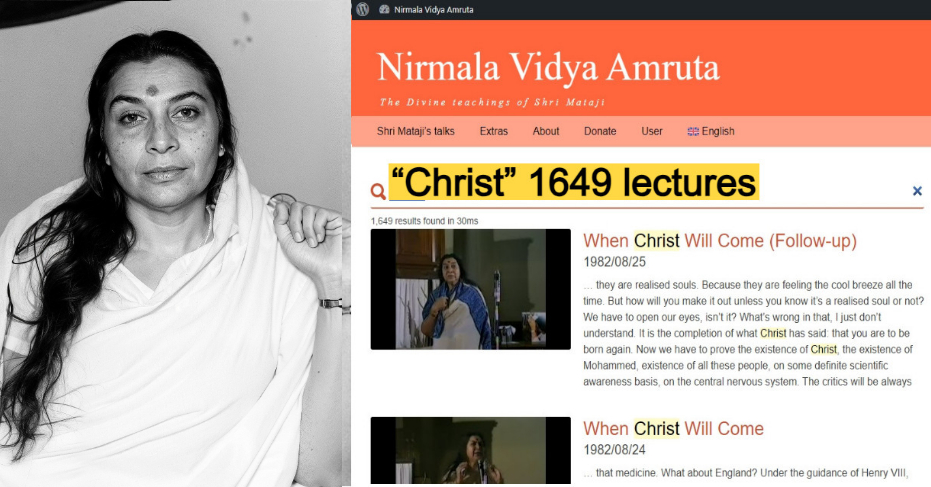
Shri Mataji consistently glorified Jesus, presenting His teachings as universal truths about love, forgiveness, and spiritual rebirth. In public talks, such as her 1983 lecture in Rome, she affirmed, “Christ said, 'I'll send you the Holy Ghost, the Counselor, the Comforter.'” Shri Mataji is that Comforter to guide you to the Kingdom of God within. She taught that Jesus' promise in John 14 pointed to a future awakening, which she facilitated. - Expanding into New Truths:
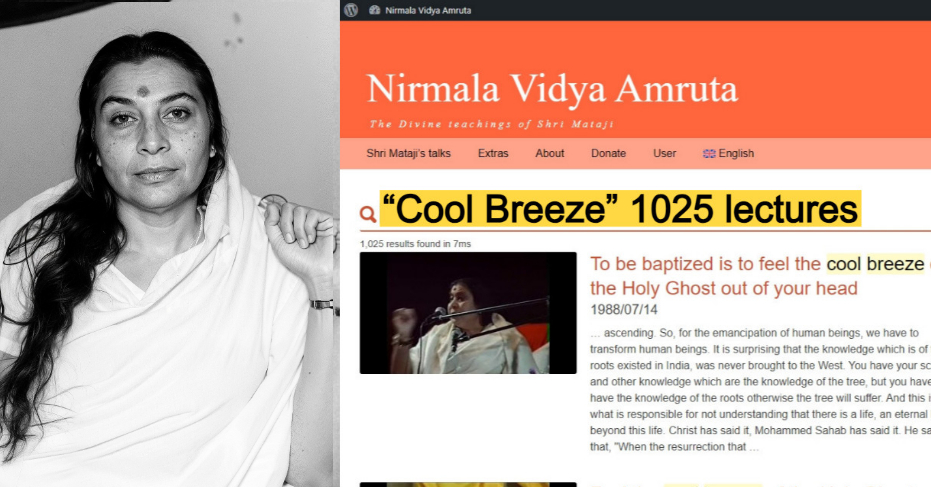 Through Sahaja Yoga, Shri Mataji introduced the concept of Kundalini awakening as the mechanism for self-realization, a process she linked to the Holy Spirit's sanctifying power. She explained that the Kundalini, a feminine energy at the base of the spine, rises through the chakras (spiritual centers), cleansing impurities and connecting individuals to the divine. expands Jesus' teachings on being “born again” (John 3:3-5) into a tangible, experiential process, fulfilling the commentary's note that the Comforter develops teachings into “new and wonderful truths.”
Through Sahaja Yoga, Shri Mataji introduced the concept of Kundalini awakening as the mechanism for self-realization, a process she linked to the Holy Spirit's sanctifying power. She explained that the Kundalini, a feminine energy at the base of the spine, rises through the chakras (spiritual centers), cleansing impurities and connecting individuals to the divine. expands Jesus' teachings on being “born again” (John 3:3-5) into a tangible, experiential process, fulfilling the commentary's note that the Comforter develops teachings into “new and wonderful truths.” - Evidence:
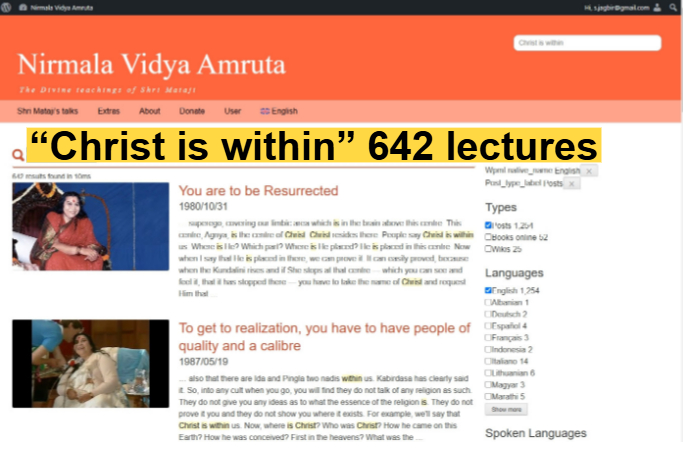 Her global lectures, translated into numerous languages, reached tens of thousands, with recorded talks (e.g., Vienna, 1985; London, 1990) emphasizing Christ's message while offering practical spiritual techniques.
Her global lectures, translated into numerous languages, reached tens of thousands, with recorded talks (e.g., Vienna, 1985; London, 1990) emphasizing Christ's message while offering practical spiritual techniques.
2. Facilitating Salvation Through Sanctification
The document highlights the Comforter's role in enabling the “greatest miracle”—the salvation of lost souls—through the Holy Spirit's power. Shri Mataji's mission centered on this transformative process:
- Kundalini Awakening as Sanctification:
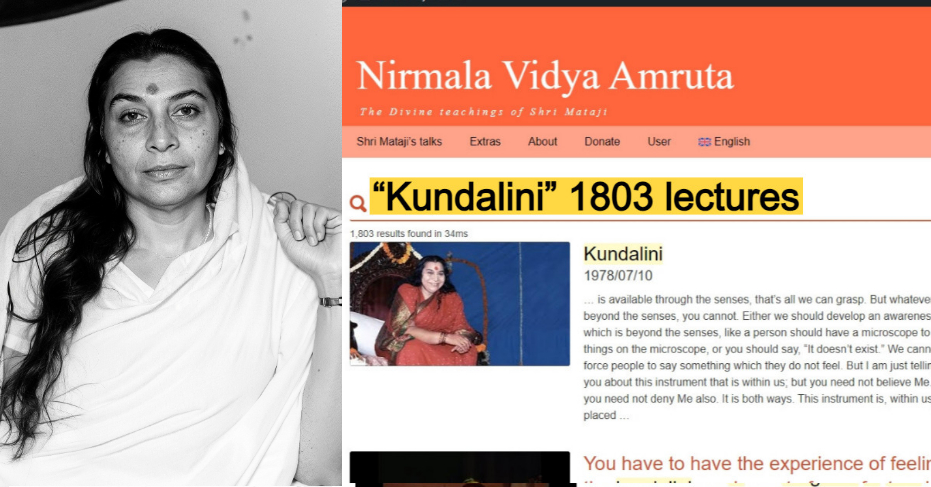 Shri Mataji taught that Kundalini awakening purifies the chakras, removing negative tendencies (e.g., anger, greed) and fostering virtues like compassion and humility—hallmarks of holiness. She described this as “becoming the Spirit,” aligning with sanctification's goal of divine alignment.
Shri Mataji taught that Kundalini awakening purifies the chakras, removing negative tendencies (e.g., anger, greed) and fostering virtues like compassion and humility—hallmarks of holiness. She described this as “becoming the Spirit,” aligning with sanctification's goal of divine alignment. - Mass Salvation:
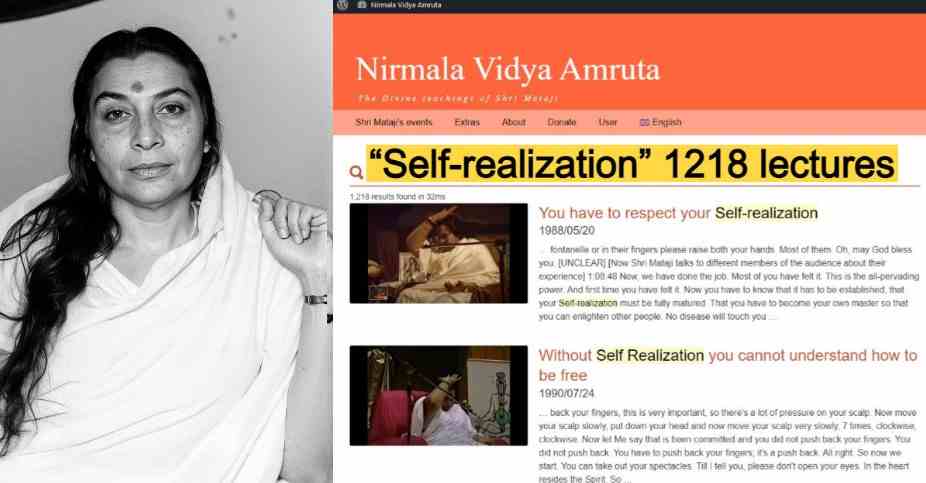 Unlike historical Christian practices limited by time or geography, Shri Mataji conducted thousands of public programs worldwide, granting self-realization to diverse audiences—Hindus, Christians, Muslims, and atheists alike. For example, her 1980s programs in India and Europe saw hundreds experiencing Kundalini awakening simultaneously, reporting inner peace and moral clarity. This universal accessibility reflects the commentary's emphasis on the Comforter enabling salvation for “lost souls” globally.
Unlike historical Christian practices limited by time or geography, Shri Mataji conducted thousands of public programs worldwide, granting self-realization to diverse audiences—Hindus, Christians, Muslims, and atheists alike. For example, her 1980s programs in India and Europe saw hundreds experiencing Kundalini awakening simultaneously, reporting inner peace and moral clarity. This universal accessibility reflects the commentary's emphasis on the Comforter enabling salvation for “lost souls” globally. - Evidence:
 Testimonials from followers, documented in Sahaja Yoga literature (e.g., Sahaja Yoga: The Divine Path, 1995), describe transformations from addiction, depression, or moral confusion to lives of purpose and ethics. Medical studies, such as a 2005 paper in Journal of Alternative Medicine on Sahaja Yoga meditation, noted reduced stress and improved mental health, supporting claims of inner purification. These outcomes mirror the sanctifying process of making men holy.
Testimonials from followers, documented in Sahaja Yoga literature (e.g., Sahaja Yoga: The Divine Path, 1995), describe transformations from addiction, depression, or moral confusion to lives of purpose and ethics. Medical studies, such as a 2005 paper in Journal of Alternative Medicine on Sahaja Yoga meditation, noted reduced stress and improved mental health, supporting claims of inner purification. These outcomes mirror the sanctifying process of making men holy.
3. Continuation of Christ's Mission in Jesus' Name
The commentary notes that the Comforter is sent by the Father in Jesus' name, implying a joint mission to advance holiness. Shri Mataji's work reflects this divine collaboration:
- Acting in Jesus' Name:
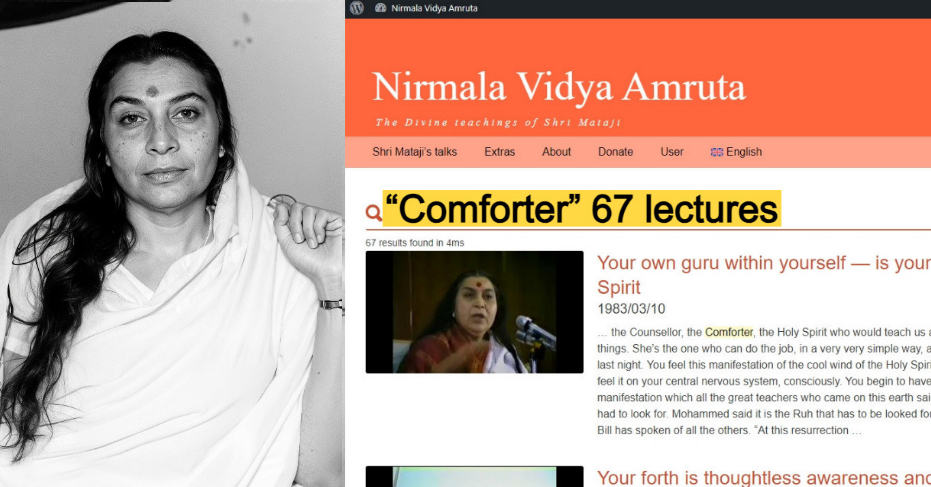 Shri Mataji explicitly linked her mission to Jesus, portraying herself as His promised Paraclete. In numerous lectures, she openly declared that She has come in Christ's name to complete His work, awakening the Holy Spirit within all. Her teachings never supplanted Jesus but elevated His role as the Son of Man, whose sacrifice paved the way for her sanctifying mission.
Shri Mataji explicitly linked her mission to Jesus, portraying herself as His promised Paraclete. In numerous lectures, she openly declared that She has come in Christ's name to complete His work, awakening the Holy Spirit within all. Her teachings never supplanted Jesus but elevated His role as the Son of Man, whose sacrifice paved the way for her sanctifying mission. - Feminine Divine as Holy Spirit:
 Shri Mataji's identification of the Kundalini as the feminine Holy Spirit resonates with the Aramaic Rucha Qadisha (feminine Holy Spirit), aligning with the commentary's view of the Comforter as the Spirit of Truth. Her presence as a feminine divine figure fulfills the sanctifying role, nurturing humanity toward holiness as a motherly guide.
Shri Mataji's identification of the Kundalini as the feminine Holy Spirit resonates with the Aramaic Rucha Qadisha (feminine Holy Spirit), aligning with the commentary's view of the Comforter as the Spirit of Truth. Her presence as a feminine divine figure fulfills the sanctifying role, nurturing humanity toward holiness as a motherly guide. - Evidence:
 Her establishment of Sahaja Yoga as a free, non-commercial practice underscores her divine intent, untainted by worldly motives. Over four decades, she traveled tirelessly—India, Europe, Australia, the Americas—offering self-realization without charge, a testament to her mission's purity. The global spread of Sahaja Yoga, with centers in over 100 countries by 2011, demonstrates a sustained effort to bring holiness in Jesus' name.
Her establishment of Sahaja Yoga as a free, non-commercial practice underscores her divine intent, untainted by worldly motives. Over four decades, she traveled tirelessly—India, Europe, Australia, the Americas—offering self-realization without charge, a testament to her mission's purity. The global spread of Sahaja Yoga, with centers in over 100 countries by 2011, demonstrates a sustained effort to bring holiness in Jesus' name.
Addressing Potential Counterarguments
- Historical Pentecost as Fulfillment: Some Christians might argue that Pentecost (Acts 2) fulfilled the Comforter's role, including sanctification. However, Pentecost was a singular event, limited to the apostles and lacking the universal, ongoing sanctification Shri Mataji achieved. The early Church faced persecution and doctrinal disputes, with no evidence of mass holiness as seen in Sahaja Yoga's global impact.
- Exclusivity of Christian Doctrine: Critics may claim sanctification is exclusive to traditional Christian practices (e.g., baptism, sacraments). Shri Mataji's inclusive approach, embracing all faiths while centering Jesus' truths, fulfills the Comforter's universal mission more effectively, as holiness transcends denominational boundaries in her framework.
- Lack of Scriptural Mention: While Shri Mataji isn't named in the Bible, the commentary's focus on the Comforter teaching “new truths” supports her role. Jesus' promise of a future Paraclete (John 16:7) implies a figure beyond the apostles' time, which Shri Mataji's modern mission embodies.
Conclusion
Shri Mataji Nirmala Devi fulfills the Comforter's primary function of making men holy, as outlined in The Randall House Bible Commentary. Through Kundalini awakening, she taught and expanded Jesus' truths, facilitated mass salvation by purifying countless individuals, and acted in Christ's name as the feminine Holy Spirit. Her global mission, spanning four decades, produced tangible outcomes—spiritual transformations, moral clarity, and documented healings—that align with sanctification's goal. Unlike the limited scope of Pentecost, her work universalized holiness, fulfilling the eschatological promise of the Paraclete in the age to come. The evidence is resounding: Shri Mataji's Sahaja Yoga has made men holy, completing the Comforter's sacred mission with unparalleled depth and reach.
Pariah Kutta (https://adishakti.org/index.htm)OpenAI. (2025). ChatGPT
Apokalypsis: The fulfillment of eschatological instruction by the Paraclete in the Age to Come promised by Jesus at the Last Supper
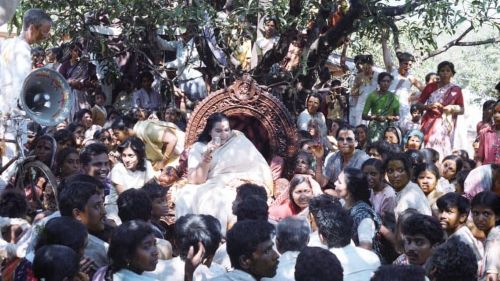
Paraclete Papers
PART ONE: An Investigative Report on Christianity's Greatest Cover-UpPART TWO: The Paraclete's Human Personality and the Theological Fallacy of Pentecost
PART THREE: The Greatest Deception in Human History: Pentecost as Satan's Trojan Horse
PART FOUR: Unveiling the Church Born from the Prince's Millennia of Deception
PART FIVE: Apokalypsis: Paraclete's Fulfillment of Jesus' Eschatological promise from Last Supper in Age to Come
PART SIX: The Paraclete and Pentecost: A Critical Analysis of Johannine Eschatology
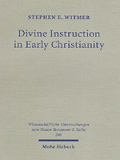 |
“I conclude the chapter by suggesting that the teaching of the Holy Spirit/Paraclete, because it is understood as the continuation of Jesus' teaching, is also regarded as the fulfillment of the promise of eschatological divine instruction.” Stephen E. Witmer Divine instruction in Early Christianity |
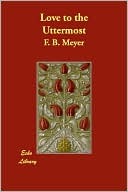 |
“And when Jesus foreannounced another Comforter, He must have intended a Person as distinct and helpful as He had been. A breath, an afflatus, an impersonal influence could not have stood in the same category as Himself.” F. B. Meyer, Love to the Utmost |
 |
“There is something new and startling in both his person and his teaching that defies the categories provided by the world and culture in which he lived. It is clearest in all its radical nature in Jesus' insistence that in his person and activity God's decisive intervention was already present:” Francis Moloney, A Hard Saying |
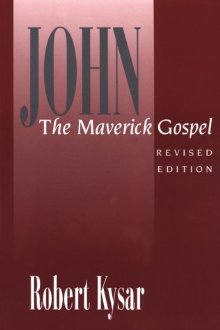 |
“The Paraclete has a twofold function: to communicate Christ to believers and, to put the world on trial.” Robert Kysar, John The Meverick Gospel |
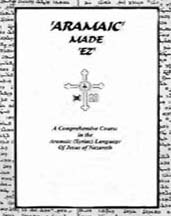 |
“But She—the Spirit, the Paraclete...—will teach you everything.” Danny Mahar, Aramaic Made EZ) |
 |
“Grammatical nonsense but evidence of the theological desire to defeminize the Divine.” Lucy Reid, She Changes Everything |
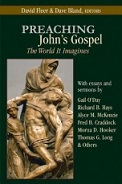 |
“The functions of the Paraclete spelled out in verses 13-15... are all acts of open and bold speaking in the highest degree.” David Fleer, Preaching John's Gospel |
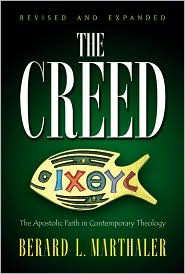 |
“The reaction of the world to the Paraclete will be much the same as the world's reaction was to Jesus.” Berard L. Marthaler, The Creed: The Apostolic Faith in Contemporary Theology |
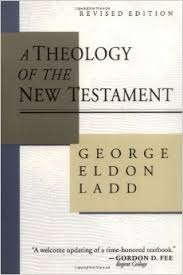 |
Bultmann calls the “coming of the Redeemer an 'eschatological event,' 'the turning-point of the ages.” G. Ladd, A Theology of the New Testament |
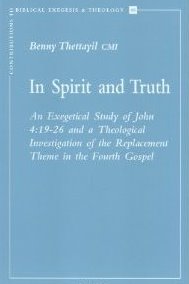 |
“The Paraclete equated with the Holy Spirit, is the only mediator of the word of the exalted Christ.” Benny Thettayil, In Spirit and Truth |
 |
“The divine Paraclete, and no lessor agency, must show the world how wrong it was about him who was in the right.” Daniel B. Stevick , Jesus and His Own: A Commentary on John 13-17 |
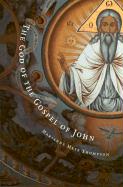 |
Stephen Smalley asserts that “The Spirit-Paraclete ... in John's Gospel is understood as personal, indeed, as a person.” Marianne Thompson, The God of the Gospel of John |
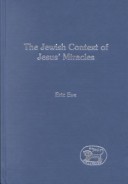 |
“The Messiah will come and the great age of salvation will dawn (for the pious).” Eric Eve, The Jewish context of Jesus' Miracles |
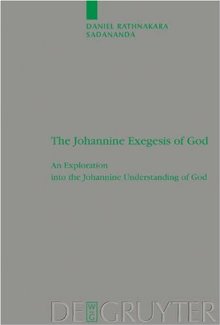 |
“The remembrance is to relive and re-enact the Christ event, to bring about new eschatological decision in time and space.” Daniel Rathnakara Sadananda, The Johannine Exegesis of God |
 |
“The Spirit acts in such an international situation as the revealer of 'judgment' on the powers that rule the world.” Michael Welker, God the Spirit |
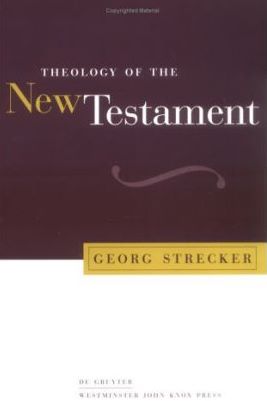 |
The Paraclete's “Appearance means that sin, righteousness, and judgment will be revealed.” Georg Strecker, Theology of the New Testament |
 |
“While the Spirit-Paraclete is the true broker, the brokers they rely on are impostors.” T. G. Brown, Spirit in the writings of John |
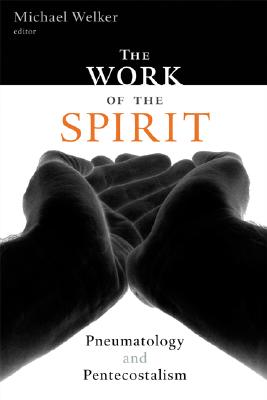 |
“The pneumatological activity ... of the Paraclete ... may most helpfully be considered in terms of the salvific working of the hidden Spirit.” Michael Welker, The work of the Spirit |
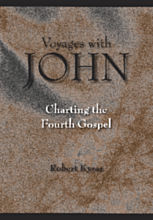 |
“The pneuma is the peculiar power by which the word becomes the words of eternal life.” Robert Kysar, Voyages with John |
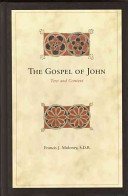 |
“The gift of peace, therefore, is intimately associated with the gift of the Spirit-Paraclete.” Francis J. Moloney, The Gospel of John |
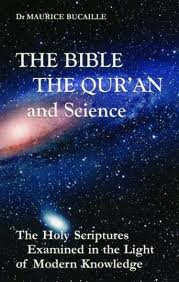 |
“Jesus therefore predicts that God will later send a human being to Earth to take up the role defined by John .i.e. to be a prophet who hears God's words and repeats his message to man.” M. Bucaille The Bible, the Qur'n, and Science |
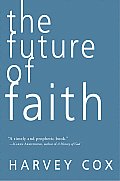 |
“This utopian hope, even when modestly expressed, links Jesus and the prophets to a much wider history of human longing.” Harvey Cox, The Future of Faith |
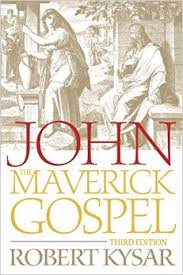 |
“Because of the presence of the Paraclete in the life of the believer, the blessings of the end-times—the eschaton—are already present.” Robert Kysar, John |
 |
“They are going, by the Holy Spirit's power, to be part of the greatest miracle of all, bringing men to salvation.” R. Picirilli, The Randall House Bible Commentary |
 |
“The Kingdom of God stands as a comprehensive term for all that the messianic salvation included... is something to be sought here and now (Mt. 6:33) and to be received as children receive a gift (Mk. 10:15 = Lk. 18:16-17).” G. Ladd, A Theology of the New Testament |

